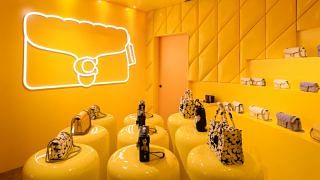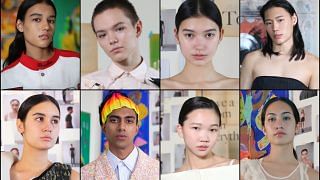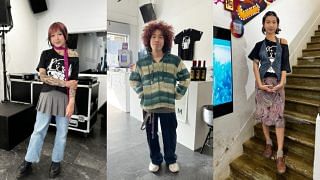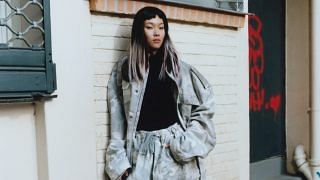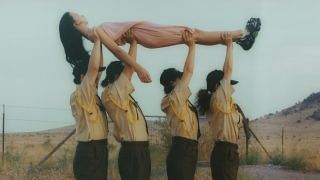The Georgian designer Demna Gvasalia is one of contemporary fashion’s foremost provocateurs-slash-revolutionaries. Even before joining Balenciaga as artistic director in 2015, he had shaken both industry insiders and everyday observers by proposing outrageous silhouettes and proportions; appropriating the wardrobes of the working class; and making witty commentary on consumption with his own designs.
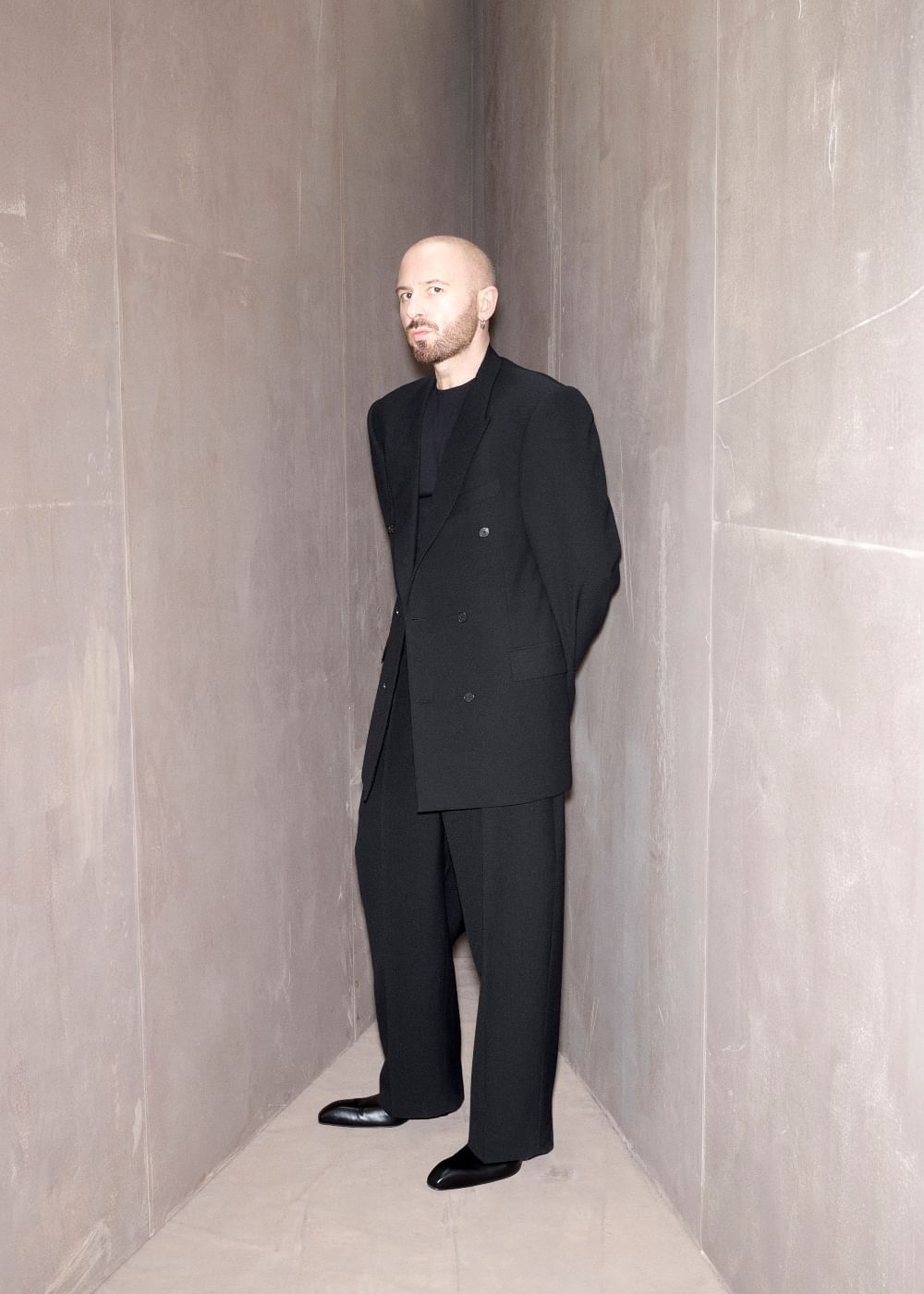
Demna Gvasalia resurrected Balenciaga’s couture line during Fall/Winter 2021 couture week.
What might not always be easy to grasp from his most controversial and eye-catching work are the parallels between him and the label’s founder Cristobal Balenciaga. There is no question about this though with his first couture collection for the house.
Revealed in July, it was hotly anticipated – besides it being his couture debut, it marked the brand’s 50th couture collection and first in 53 years. His references to the late Balenciaga’s designs are evident throughout, even if Demna-fied.

Balenciaga’s revived couture collection was shown at the maison’s original salon at 10 Avenue Georges V in Paris.
The polka dots on a draped silk chiffon dress, for example, are hand-printed spot for spot to match the original. A plain fit-and-flare evening dress from the archives has been remade into a trompe-l’oeil gown cut from silk jacquard developed by the master embroiderer Jean-Pierre Ollier to look vintage (the twist comes in the back, where it’s revealed to in fact be a top, worn with tailored wool trousers on the runway).
Parkas are crafted from taffeta and given bombastic volume to resemble the house’s trademark opera coats. As with earlier couture collections, there are generously cut stoles except that instead of accompanying gowns, they swathed models dressed in oversized tailoring during the show.
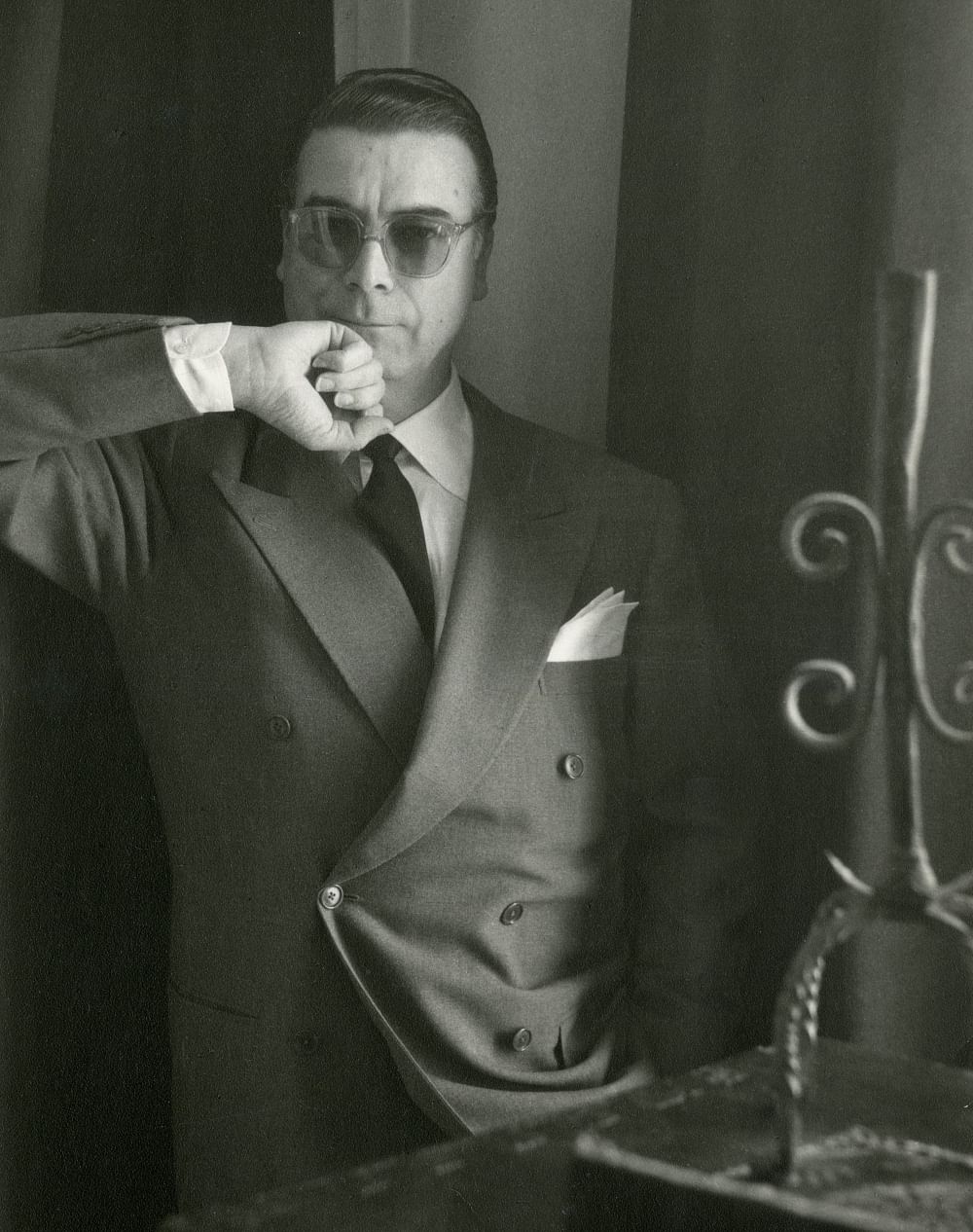
Despite his success, Cristobal Balenciaga shuttered his namesake couture house in 1968 after nearly half a century in the business citing that there was “no one left to dress”. The brand was reopened in 1986 focusing on ready-to-wear.
Both designers are obsessives of construction and silhouette, using clothing to carve surprising (and often forgiving) shapes around the body. While the collection is replete with Gvasalia’s aesthetic signatures, the Cristobal connection remains.
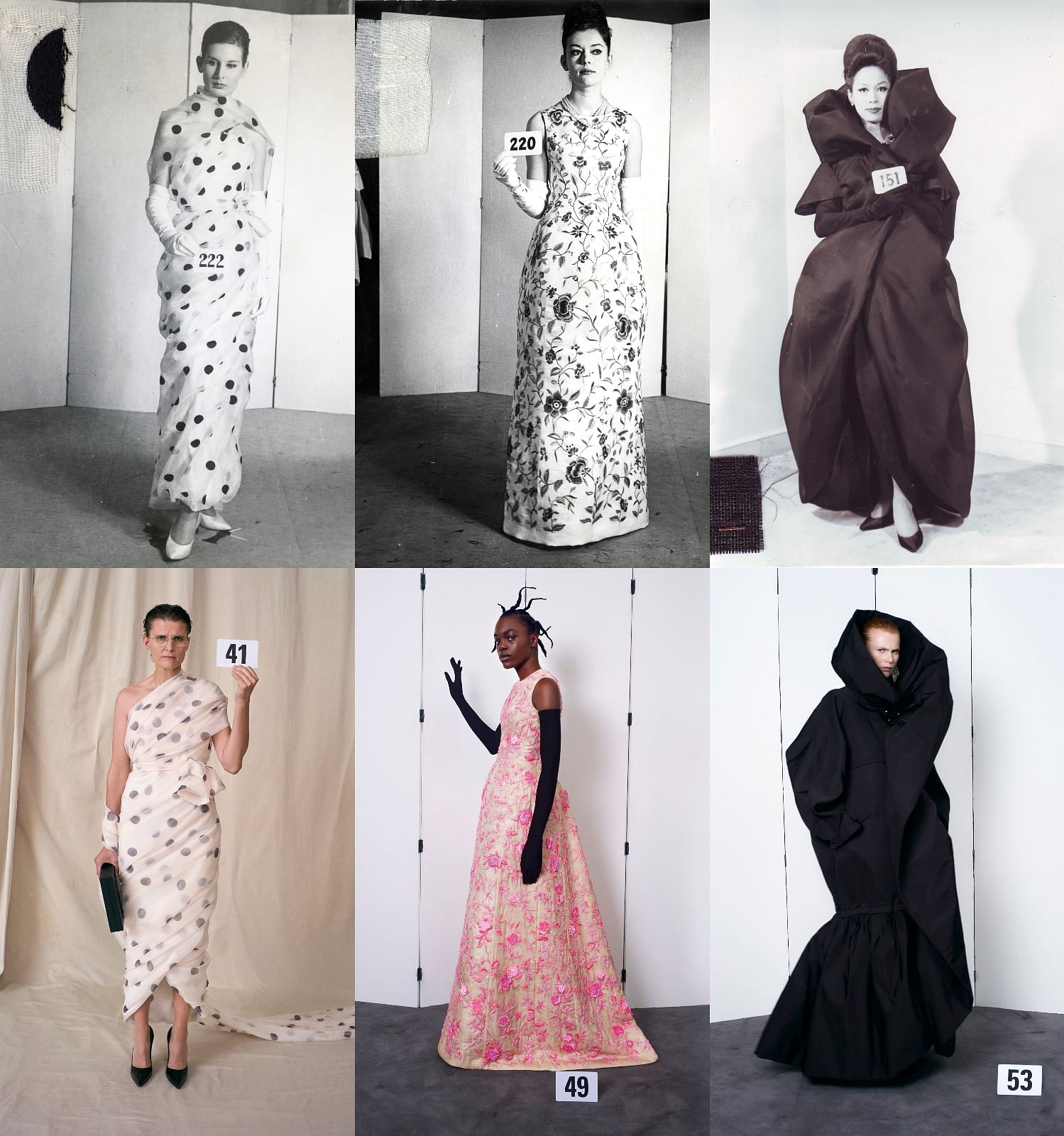
Spot the parallels between some of the key looks from Gvasalia’s debut couture collection for the house (all at the bottom) and their respective archival inspirations designed by Balenciaga himself (all on top).
The seemingly least couture elements come in the likes of anonymous-looking vicuna knitwear (done by hand, of course), jeans (they’re woven on ancient Japanese looms) and an unassuming cable knit that’s actually entirely assembled out of chains (again by hand).
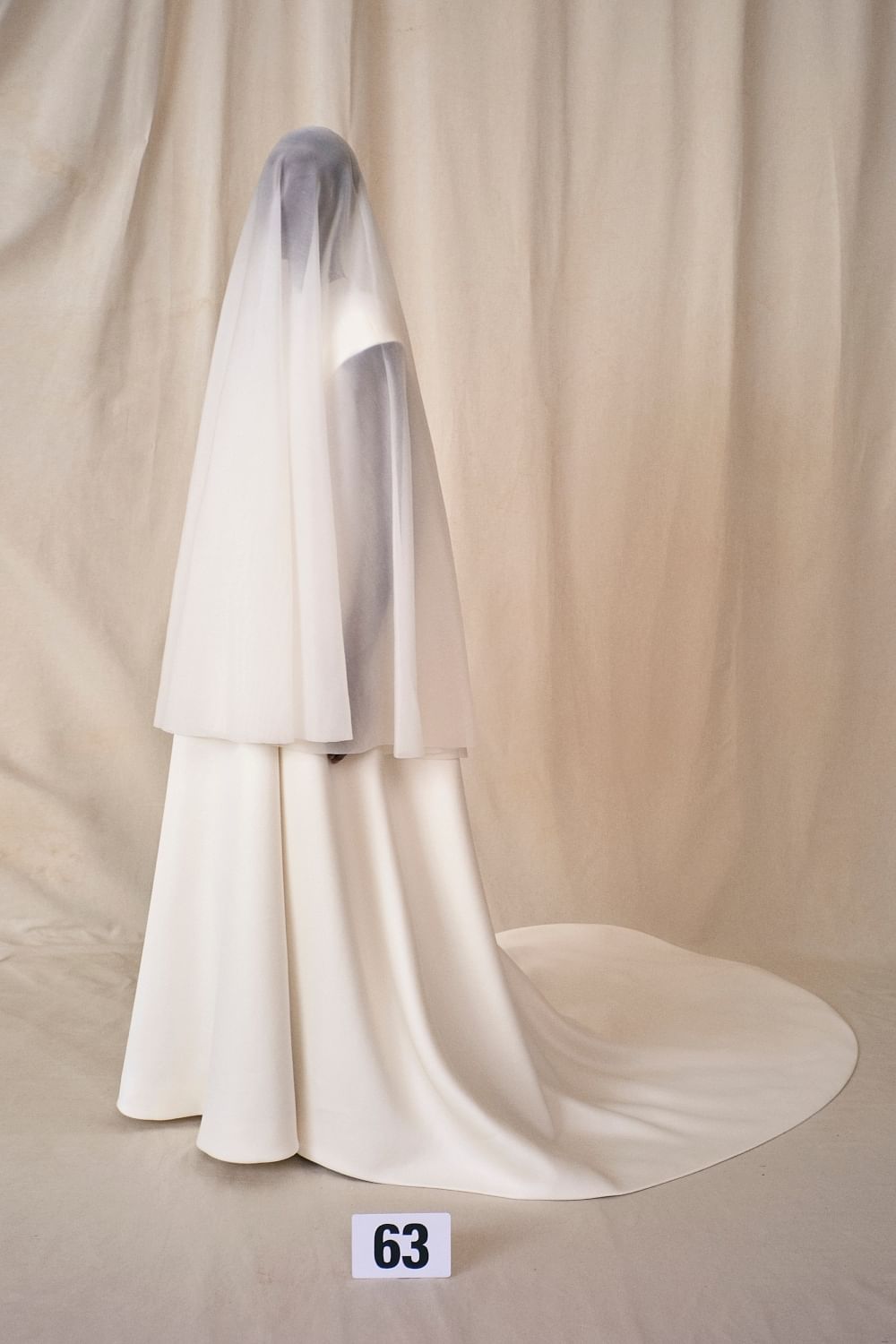
The Balenciaga couture bridal gown designed by Demna Gvasalia.
For all their subversive mundanity that’s typically Gvasalia, these pieces have no doubt been elevated to the nth degree. And in them, some might say, best lies the essence of couture and Cristobal Balenciaga – a man who glamourised cycling outfits and created the sack dress that would be the precursor to the mini dress: the ability to transform the simple and practical into something grand, endowing the wearer whatever the age, look or size with allure and a sense of confidence.
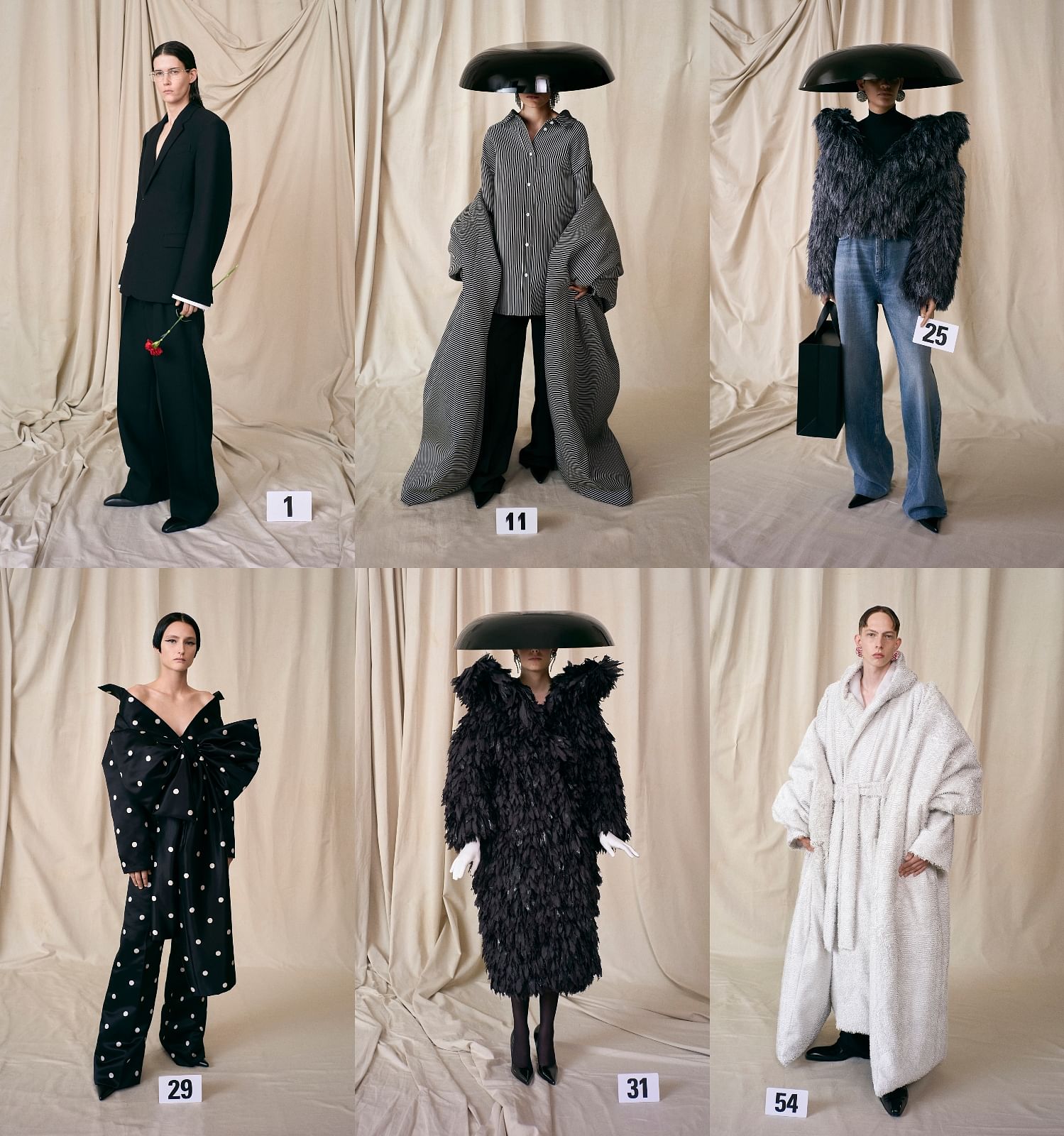
Gvasalia points out that the revival of the couture line completes his “multi-layered vision for Balenciaga the brand” that under his helm has become a byword for normcore-made-luxe and rigorous tailoring. His debut couture collection elevates both styles with an artisanal hand without losing his signature ironic wit.
In a handwritten note given out at the show, Gvasalia wrote that couture is necessary for the “survival and further evolution of modern fashion” because it is the highest, most inventive form of making clothes. Newness is increasingly rare today, but it’s a quality that glistens in this meeting of past and present; of the formal and familiar that the man has put together.
Cristobal Balenciaga would be proud.
A version of this article first appeared in the October 2021 Life Is Beautiful edition of FEMALE








